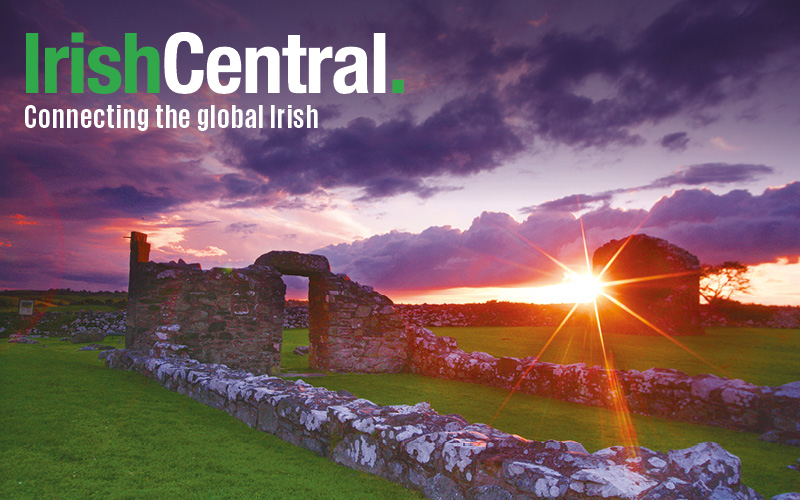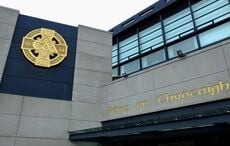Without Father Alec Reid there would never have been a peace process in Northern Ireland. Tim Pat Coogan remembers the priest of peace.
Fr Alec Reid was the initiator of the peace process and the most tireless worker for it.
But when this shy, diffident Tipperary man first entered the maelstrom of life on the Falls Road in Belfast in the early days of the Troubles he encountered scepticism and near derision.
"He was preaching ecumenism at mass last Sunday!" a prominent republican told me wonderingly. The man had been one of the group who had helped to prevent the monastery from being burnt down during the Orange onslaught of August 1969.
But Clonard has always been a red-bricked oasis of Christian charity in the desert of Belfast Protestant/Catholic relationships and Fr Alec, and, later, like-minded colleagues such as Fr Gerry Reynolds, also a Southerner, reached out to both orange and green.
Alec was torn between the demands of frantic parents seeking news of a son who had been "lifted" by the security forces or taken away by the IRA, making peace between the various IRA factions, being called out to hospitals at all hours of the day and night, and preaching ecumenism.
Eventually, his health broke down. I visited him once in Our Lady of Lourdes Hospital and found him lying on the outside of the bed, fully clothed, his arms folded, gazing blindly at the ceiling, his sight and energy sapped by diabetes.
His superiors sent him abroad to recover and stationed him as far as they could from Belfast, but he worked his way back, engineering postings to various Redemptorist Houses, until he finally managed to springboard himself from Dundalk back to Belfast.
Here, the death of a UDR man whom he had vainly tried to save – as he would later do in the incident at Milltown Cemetery, when he unsuccessfully attempted to rescue two British soldiers – finally decided him on making an effort at securing an overall peace settlement.
He fireproofed himself against the Church authorities by having the Redemptorist theologian Sean O'Riordan vet his plans and later secured the approval and support of Cardinal Tomas O Fiaich. In fact, the peace process might have begun earlier than it did had O Fiaich not died suddenly on a Lourdes pilgrimage. The cardinal had agreed to break the logjam by publicly meeting Gerry Adams.
Alec knew and trusted Adams, whom he had met through the latter's custom of attending 11 o'clock Mass in Clonard. Moreover, his mother's family, the Hannaways, were both prominent republicans and neighbors and supporters of the monastery.
Adams was supportive of a strategy that shelved the prospect of a united Ireland and concentrated on powersharing between nationalists and unionists, each side to work towards their goals by democratic methods, independently of British influences.
They had to work in extreme secrecy. Security authorities had placed Clonard under intensive electronic surveillance and there were people in the Republican family who would gladly have shot Adams had they known what he was doing. But the pair persevered, sometimes holding their conversations in Adams's kitchen or bathroom with the taps running to scramble bugs.
Eventually, Alec asked John Hume to join the talks. Hume risked extreme censure from his party, the SDLP, but willingly supported the initiative. Alec then approached me to get Charlie Haughey aboard as the leader of what was seen in the North as the largest republican party in the South.
It was 1986 and Haughey and I had fallen out because I had criticised him in the Irish Press for rejecting the 1985 Anglo Irish Agreement.
However, Haughey proved surprisingly welcoming and although he would not meet Adams he appointed the excellent Martin Mansergh as a go-between. He also accepted the peace strategy blueprint that Alec had drawn up in conjunction with Adams and studied it carefully.
And after he became Taoiseach again the following year, he received myself and Alec at Kinsealy, where he tested Alec's IRA knowledge by finding out from him just what had happened at Loughall, where Jim Lynagh's ASU (active service unit) had been wiped out by the SAS after surrendering.
There followed some years of activity without movement, during which Alec never gave up hope.
Talking on the phone, he employed a code which embodied the two loves of his life – the Holy Spirit and the GAA.
Speaking on the phone, he would describe progress or lack of it by saying things like: "The Holy Spirit is in the forwards." If things were going badly He would be at wing-back or even on the bench.
Alec's faith in the Holy Spirit was such that, traditionalist though he was, he even accommodated to the church's newer custom that the Holy Spirit might be a she.
The peace process took a great leap forward after I introduced Alec – "the Monk", as she described him – to Jean Kennedy Smith. The new US ambassador was deeply impressed by him and she, and importantly her brother, Senator Ted Kennedy, believed that Alec was not merely a good man but a well-informed one and that Adams was sincere in his desire for peace.
Despite all the subsequent alarms and excursions, the Good Friday Agreement was eventually born. As Fr Gerry Reynolds memorably put it: "It was like a baby. There was blood, pain and torn tissue, but the baby survived and will grow strong."
If the Irish church is to survive, it will be because of the work of Alec Reid and the men of Clonard Monastery.
* Tim Pat Coogan's book 'The Famine Plot' has been short-listed in the non-fiction section of this week's Bord Gais Energy Book Awards.
Here’s an RTE documentary on Father Alec Reid “The Secret Peacemaker”:




Comments